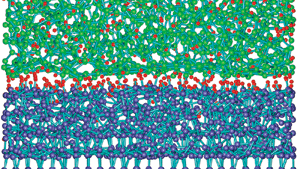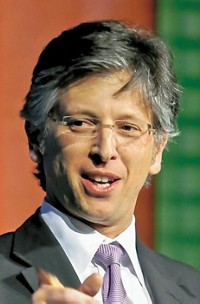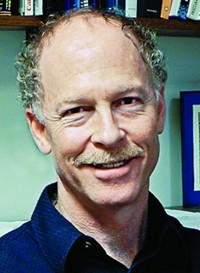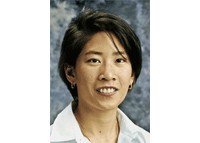Advertisement
Grab your lab coat. Let's get started
Welcome!
Welcome!
Create an account below to get 6 C&EN articles per month, receive newsletters and more - all free.
It seems this is your first time logging in online. Please enter the following information to continue.
As an ACS member you automatically get access to this site. All we need is few more details to create your reading experience.
Not you? Sign in with a different account.
Not you? Sign in with a different account.
ERROR 1
ERROR 1
ERROR 2
ERROR 2
ERROR 2
ERROR 2
ERROR 2
Password and Confirm password must match.
If you have an ACS member number, please enter it here so we can link this account to your membership. (optional)
ERROR 2
ACS values your privacy. By submitting your information, you are gaining access to C&EN and subscribing to our weekly newsletter. We use the information you provide to make your reading experience better, and we will never sell your data to third party members.
Environment
Air Force Funds High-Flying Research
Physical scientists supported by the Air Force Office of Scientific Research sing its praises
by William G. Schulz
June 18, 2007
| A version of this story appeared in
Volume 85, Issue 25

THE MILITARY HAS long funded basic research in the physical sciences. One of the biggest—though perhaps not the most well-known—supporters of basic research within the military is the Air Force Office of Scientific Research (AFOSR), which manages the entire basic research investment for the Air Force.
"We pursue things and see where they lead," says AFOSR Director Brendan B. Godfrey. It's both a proud tradition and an admittedly risky approach that doesn't always pan out, he says. Among the many lines of inquiry that have been fruitful, he notes, are research projects on self-healing materials and on the effects of directed energy on organisms, which could have military significance and also open a new path to cancer treatment.
"One of the important things we do here is find opportunities in the scientific community—areas of exciting science that overlap with Air Force needs," says Michael R. Berman, one of about 35 AFOSR program managers. "We go to meetings, and we listen and talk to people in the community."
"My goal is not to have my program managers sitting in Arlington," adds Godfrey, referring to AFOSR's headquarters in Virginia.
"If it wasn't for the timely support of instrumentation from AFOSR, we would not have made the transition from the picosecond to the femtosecond world," says 1999 Nobel Laureate Ahmed H. Zewail, a professor of chemistry and physics at California Institute of Technology. He says AFOSR has been funding his work for more than 20 years, and he feels extremely grateful for its support.
Zewail tells the story of his first meeting with two program officers from AFOSR in 1985. He was at a conference in Rochester, N.Y., giving a talk on his work. Afterward, the two program officers asked to have lunch with him, and they talked some more about Zewail's investigations. Eventually, he submitted a formal grant proposal to AFOSR, and it was funded, allowing him to begin his revolutionary work in femtosecond (10-15)chemistry.
"These kinds of things don't happen often," says Zewail of his meeting with the two program officers. "They came back and said they wanted to fund my research." The only problem was the cost of the equipment. At the time, says Zewail, he needed instrumentation that would cost nearly $1 million. "They were so visionary that they shifted budget money within the grant in order for me to build the important apparatus I needed.
"Air Force support is unique," Zewail continues, "because the program manager is always interacting with you to find out your needs." He says there are in-person meetings—his current program manager, Berman, came to visit him recently at Caltech—where researchers can talk about their needs and the future of their research.
Another Nobel Laureate—Alan J. Heeger, a professor of physics at the University of California, Santa Barbara—says the Air Force "was willing to take some risks and respond quickly" to a research proposal he made some 20 years ago.
But "it's been more than just the support," says Heeger, who shared the 2000 Nobel Prize in Chemistry for work on electrically conducting polymers. He says his program manager, Charles Y-C. Lee, holds individual meetings and review meetings with other members of the program where participants can hear about each other's work and explore potential collaborations. AFOSR is currently funding Heeger's work to create solar cells from semiconducting polymers.
Heeger says he has never had any qualms about accepting military funding. Many other AFOSR-funded researchers feel the same way, and they praise AFOSR for its support and encouragement of basic research that is published in the open literature.
What researchers do worry about is whether AFOSR and its counterparts in other branches of the military will continue research funding at high levels. Military budgets have tightened considerably in recent years, especially with the war in Iraq. Godfrey concedes that AFOSR has taken a funding hit. "There has been a decline in both budget and number of personnel over the past decade," he says, "but the budget decline is now arrested."
AFOSR still supports a breathtaking array of research projects. In chemistry alone, the breadth of support is impressive. "One of the most satisfying things" about being an AFOSR program officer, Berman says, "is when you see new science being done that wouldn't have happened without your involvement."
"I have been funded continuously by the Air Force for 25 years," says Mark S. Gordon, a professor of chemistry at Iowa State University. "The overriding theme of our research has been the use of quantum chemistry to assist in the design of novel materials that might be used as coatings, high-energy fuels, and heterogeneous catalysts, to name a few examples. To accomplish these goals, we collaborate extensively with experimental chemists and physicists in many different universities and at several Air Force research laboratories. Examples of current projects are the design of new ionic liquids, the study of gold clusters on metal oxide supports as catalysts for industrially important processes, the study of carbon-titanium clusters, and the study of processes that occur on semiconductor surfaces.
"I have worked with several AFOSR program officers over the years," Gordon continues. "They are not just bean counters, but excellent scientists in their own right."
Rice University chemistry professor James M. Tour says, "It's a lot of fun getting Air Force support" because of the flexibility in funding. In his work, he found that carbon nanotubes are very good at absorbing microwave radiation. Thanks to Air Force funding, Tour says, "we had the freedom to explore that. It was of such interest to them that after I made a presentation to Lee, he teamed me up with other people. They encourage new research teams to form. Some program managers care more about getting money out the door. He cares about the science."

At the University of Florida, chemistry professor John R. Reynolds has been receiving AFOSR funding since 1992. His polymer science group is interested in developing conjugated polymers for a variety of applications. He says he is using Air Force funding, for example, for the synthesis of new polymers for electrochromic and other electronic devices. He says the work is relevant to the Air Force's interest in such things as cockpits that change color in response to ambient light or display colors for cockpit instrumentation.
"With the Air Force, it's understood that it has to be mission-related research," Reynolds says. But "we have also been able to go off into other areas."
Rodney J. Bartlett, a professor in the Quantum Theory Project at the University of Florida, studies quantum chemistry with funding from AFOSR. He describes his work as seeking "a better way of solving quantum mechanics equations." For the Air Force, he says, one interest is in higher energy rocket fuels.
In a February 2000 article in Chemistry & Industry , Bartlett writes of his research: "Simple valence bond considerations suggest many electronically logical structures for novel but experimentally unknown polynitrogen molecules. Can the existence of these molecules be predicted? As most of them are speculative, quantum chemical calculations have played a major role in identifying likely candidate molecules and determining what conditions are needed to trap, observe, and use them. Furthermore, quantum chemistry can predict their spectroscopic fingerprints, allowing them to be identified.
"The question is of more than academic interest," he continues. AFOSR researchers "have explored unusual polynitrogen molecules with the aim of finding new rocket fuels that can improve on the currently used combinations of hydrogen and liquid oxygen."
"Military funding of basic research is really important," says Michael D. Fayer, a professor of chemistry at Stanford University. "Without funding from places like AFOSR, basic science in the U.S. would be in serious trouble."
Fayer has been a world leader in the development and application of ultrafast nonlinear laser techniques and associated theory to the study of molecular condensed-matter systems. Part of his research program looks at basic molecular properties and systems that might be of interest to the Air Force. Ultimately, he says, the Air Force is interested in such things as the effects of the atmosphere and space environment on a variety of materials—for example, those found on the space shuttle or in rocket engines.
"AFOSR does a wonderful job of fostering connections," says Stephen R. Leone, a professor of chemistry and physics at the University of California, Berkeley. In his 20 years of being funded by AFOSR, the agency has been instrumental in helping him form links with other researchers, he says.
Leone currently heads an AFOSR Multi University Research Initiative (MURI). He is working with colleagues at UC Berkeley and the University of Colorado, Boulder, to investigate the attosecond (10-18) time domain. "Many temporal processes on attosecond timescales will have potential AFOSR applications, including solid-state and semiconductor carrier events, nanoscale transport phenomena, chemical transition-state dynamics, cluster and liquid-state caging dynamics, charge-switching phenomena, and photoprocesses in biochemical systems," he points out in a report to AFOSR.
The Air Force was "visionary" to believe that some projects couldn't exist without significant funding, Leone says. In his own case, AFOSR funds have been used to construct two new laboratories for attosecond pulse generation. He says AFOSR program managers he has worked with "have been of the highest level of integrity and ability."
At Rice University, Naomi J. Halas, a professor of electrical and computer engineering and of chemistry, has been using AFOSR funding to further development of her invention of "nanoshells," nanoparticles with tunable optical properties. The Halas group is pursuing applications of nanoshells in biomedicine, in areas relating to ultrafast immunoassays, optically triggerable drug delivery, early-stage cancer detection, and photothermal cancer therapy. She says the Air Force is interested in her work because of possible applications in sensors, lasers, and materials.
With Air Force funding, Halas says, "we have been able to focus on fundamental science, to really push the envelope." For example, AFOSR funding has helped her research group investigate the use of nanoshells to probe chemical reactions.
"WORKING WITH AFOSR people has been one of the best university/federal agency relationships I can imagine," says Uzi Landman, a physics professor at Georgia Institute of Technology. In more than 19 years of AFOSR funding, he has conducted research in such areas as nanotribology and nanocatalysis. Most recently, his lab has been investigating nanojets, fluid jets as small as 10 nm. These jets could be used for such diverse purposes as creating patterns on surfaces or positioning satellites in space.
At the U.S. Naval Academy, chemistry professor Judith A. Harrison uses AFOSR funding for work in molecular dynamics simulations to study friction, wear, and solid lubricant coatings. Such coatings, she says, are of particular interest for MEMS (microelectromechanical system) devices but also for larger items such as engine parts and tools. Materials of particular interest for solid lubricant coatings, she says, are diamondlike carbon films and nanocrystalline diamond, though really "we're interested in the whole spectrum of carbon-hydrogen-containing coatings."
Harrison says she feels very fortunate to have her research program funded both as an individual researcher and as part of a MURI program called "Multifunctional Extreme Environment Surfaces: Nanotribology For Air and Space." What makes Harrison's research unique is that "we can use computers to model chemical reactions that take place when objects are in sliding contact. These kinds of simulations give us important insights into the friction and wear processes. Ultimately, we want to understand the atomic-scale mechanisms governing these processes," she says. "We want to see which bonds are breaking and which ones are being formed." By understanding wear properties, she says, they might be able to predict how long parts of an engine or device might last so that they can be replaced before they wear out.
AFOSR is willing "to support the unconventional if it's defensible," Godfrey says. "We're patient and focused on developing long-term relationships with researchers. Like the National Science Foundation, we make heavy use of peer review, but occasionally we ignore that advice. We don't want to block out good ideas that are not mainstream."







Join the conversation
Contact the reporter
Submit a Letter to the Editor for publication
Engage with us on Twitter